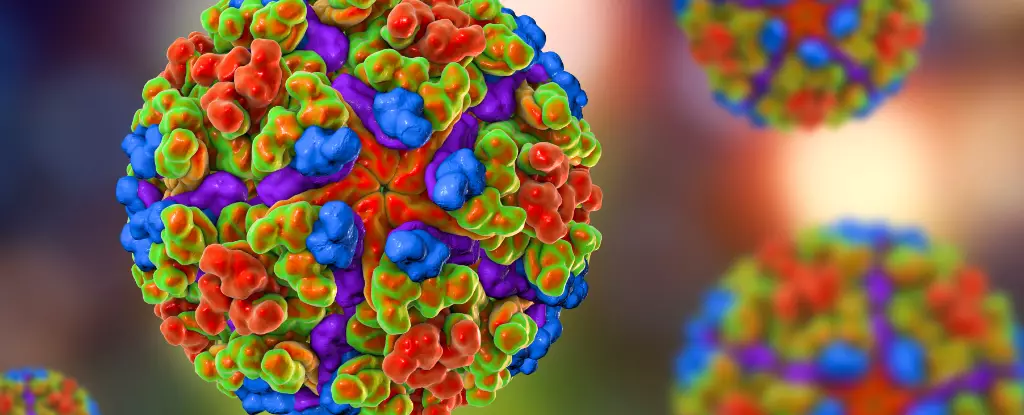In recent years, the world has become profoundly aware of the devastating potential of infectious diseases. Yet, the resurgence of chikungunya—a mosquito-borne virus often overshadowed by its more notorious counterparts like dengue or Zika—poses a threat that cannot be ignored. The World Health Organization (WHO) has sounded the alarm, warning that a major global outbreak may be on the horizon, reminiscent of the crises seen two decades ago. This warning underscores an uncomfortable truth: despite advancements in medicine and public health, we remain vulnerable to old pathogens exploiting newfound environmental vulnerabilities. The resurgence of chikungunya highlights how interconnected our health systems are and how rapidly infectious diseases can traverse borders in an increasingly globalized world.
What makes this threat even more alarming is its ability to spread silently yet swiftly through regions with inadequate mosquito control infrastructure. Its similarity in symptoms to other diseases such as dengue and Zika complicates diagnosis, allowing outbreaks to expand unnoticed until they become unmanageable. As WHO officials point out, over 119 countries are now at risk—covering more than half of the global population—an unsettling statistic that should prompt immediate action. We are no longer looking at isolated outbreaks but a potential pandemic that could stretch healthcare resources thin and destabilize societies unprepared for such a surge.
The Pattern of History Repeating Itself
History provides a sobering lens through which we can understand the current warnings. In 2004-2005, the Indian Ocean was ravaged by a chikungunya epidemic that spread rapidly across islands, then further afield, infecting nearly half a million people. The pattern from that time is painfully familiar—initial outbreak in relatively small, confined areas, followed by regional and even global dissemination. Today, regions such as Reunion, Mayotte, Madagascar, and even parts of South Asia are witnessing similar waves of infection. The pattern is consistent, the warning signs are visible, and yet, the question remains: are we doing enough to prevent history from repeating itself?
One of the most concerning aspects of this scenario is the underestimation of the disease’s threat level. The case fatality rate remains below 1%, seemingly a manageable figure—until you realize that when millions become infected, even a tiny percentage translates into thousands of lives lost. The devastation that can stem from a pathogen with relatively low mortality rates, but high morbidity, should serve as a wake-up call. It’s not just about mortality; it’s about the debilitating joint pain that cripples individuals, straining healthcare systems, and affecting productivity. Chronic illness following infection can leave scars long after the virus is gone.
Environmental and Societal Factors Amplifying the Crisis
Climate change is quietly fueling the growth of mosquito populations like Aedes aegypti and Aedes albopictus—the primary vectors of chikungunya. As temperatures rise and weather patterns shift, these mosquitoes are expanding their range, moving into areas previously outside their habitat. The so-called “tiger mosquito” has already begun drifting toward northern regions, bringing the risk of local transmission to places where immunity is absent and healthcare infrastructure is often unprepared.
While individual behavioral measures such as using repellents and eliminating stagnant water are vital, they merely scratch the surface of a much larger issue: urbanization, poverty, and climate change create fertile ground for such diseases to flourish. These factors undermine the core public health infrastructures that could otherwise contain outbreaks early. The WHO’s call for preparedness emphasizes that recognizing these patterns now is essential—early detection and rapid response are the only ways to prevent large-scale epidemics. Yet, the gap between knowledge and action remains wide, largely due to complacency and resource limitations.
Moreover, globalization ensures that infectious agents are no longer confined by borders, with imported cases in Europe serving as stark reminders that an outbreak in one part of the world quickly becomes a global concern. Europe’s experience—local transmission in France and suspected cases in Italy—demonstrates how interconnected our health security is. It underscores the urgent need for coordinated international strategies, better surveillance, and resource sharing.
The Moral and Practical Imperative for Action
The current warnings about chikungunya are not alarmist rhetoric; they are a pragmatic call to arms. The virus’s spread offers profound lessons about the importance of proactive measures rather than reactive responses. Ignoring these signs—assuming that past outbreaks are isolated incidents—could prove catastrophic. Instead, we must seize this moment to reinforce vector control programs, improve diagnostic capacities, and foster international collaboration.
On a deeper level, addressing this threat challenges us to rethink our relationship with the environment. The expansion of mosquito habitats signals a need for sustainable urban planning, better waste management, and climate policies that consider health impacts. It is no longer sufficient to treat outbreaks as isolated incidents; we must view them as symptoms of a broader planetary health crisis.
Ultimately, the onus is on governments, communities, and individuals. Public health is a collective effort—every mosquito avoided, every stagnant water container emptied, and every health system strengthened adds up. In this interconnected world, vulnerability in one region echoes globally. The threat of chikungunya is a stark reminder that health security depends on collective responsibility, foresight, and unwavering commitment to preventive action. The question is not only whether we can stop it but whether we are willing to prioritize our shared global health future over complacency.


Leave a Reply